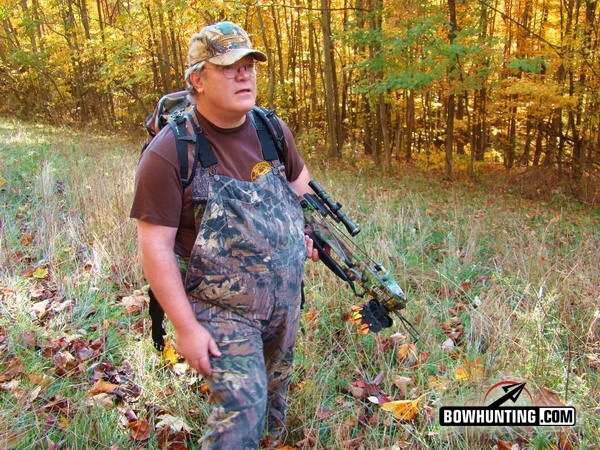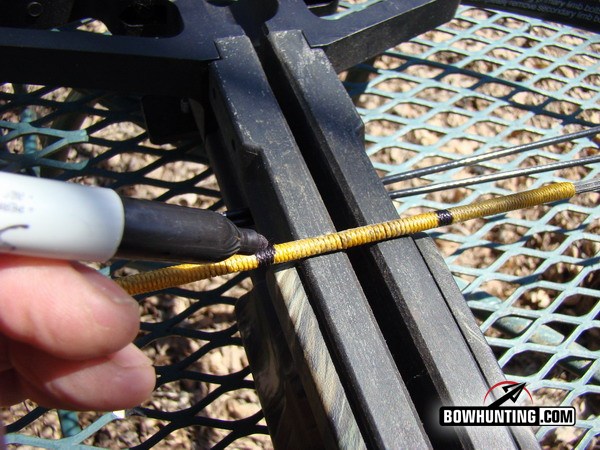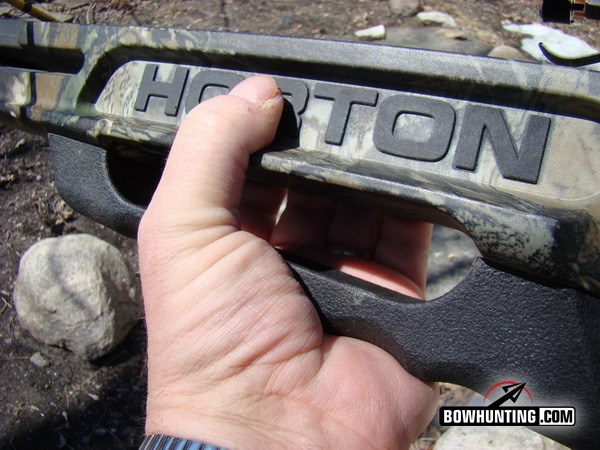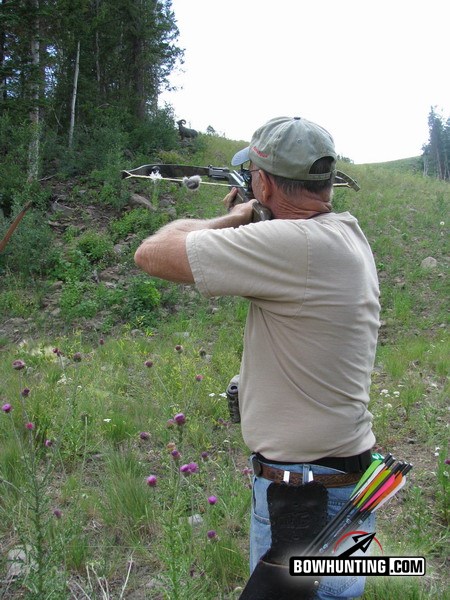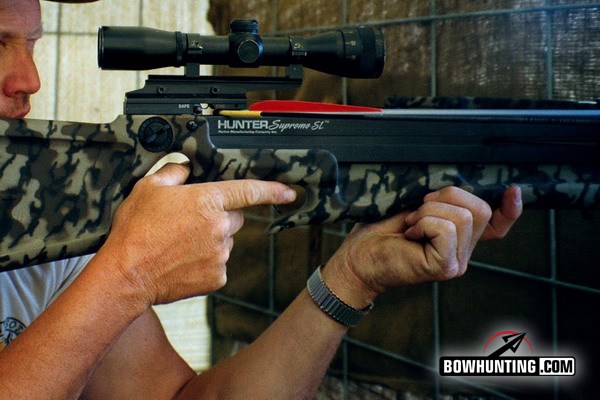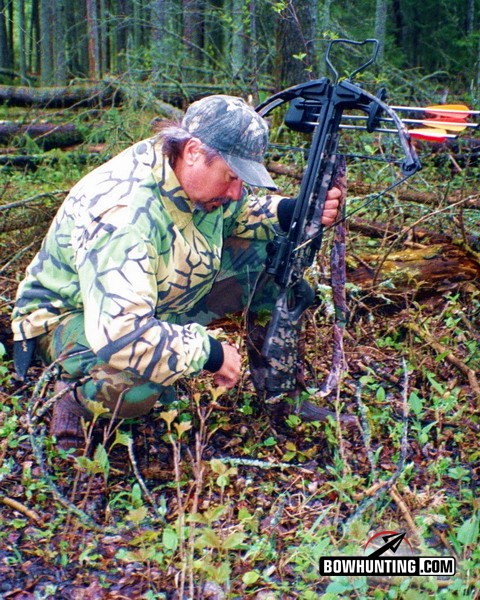LAST UPDATED: May 8th, 2015
The crossbow is so powerful it is like a 30.06 that shoots arrows.”
That’s a claim that has been made by the anti-crossbow camp for decades and the truth of the matter is that with a 100-225 lb. or more draw weight, crossbows usually are more powerful than most vertical bows. The additional draw weight, however, is necessary to compensate for the shorter power stroke and the lesser amount of KE stored in a crossbow arrow.
One can only assume, therefore, that if a crossbow has a heavier draw weight, it’s more dangerous. The truth is that, as with any other hunting tool, safety during use is critical with the crossbow. The very first thing that every new crossbow hunter should do is sit down and read their owner’s manual – cover to cover – at least once; twice is even better. That manual will explain proper handling and safety procedures for your specific bow. There are some general practices that apply to all crossbow users regardless of which bow they shoot.
Mark your serving on each side of the rail so that you can visually check to insure that you have cocked your crossbow evenly.
Step number one is always generously use rail lube and string wax when operating your crossbow. If the string breaks, bad things will happen to your crossbow and perhaps to the shooter or the people in close proximity. Both lube and wax preserve the string. If your string begins to fray and strands break – change it, immediately. Most crossbows are on safe at the end of the cocking process. Always check to make sure
that your bow is on safe before doing anything else. This is very important! Also make sure that the string is centered after cocking by marking your serving so that you can visually verify that it has been drawn back evenly. If the string is not centered, it will change the impact point of your arrow similar to using a different anchor point on a vertical bow.
Now listen up! Please make sure that you thumb is below the rail of the crossbow before releasing your arrow; if not, when you pull the trigger the string will hit your thumb and something is going to give. It will not be the string! I’ve seen a variety of severe wounds inflicted by a crossbow string and none of them are fun, even the ones that do not draw blood instead of amputate. The fact that most folks only do it once is of little comfort when you are hopping around, screaming in pain.
When choosing a crossbow, select one that has a forestock that will help keep fingers well below the rail preventing injured fingers.
Never dry fire a crossbow. Shooting a crossbow without an arrow to absorb the energy will blow up your bow and when that happens one is never sure of where all the pieces will fly; you may be seriously hurt. Remember that a loaded crossbow should be handled exactly and with the same care as a loaded firearm.
On the range, make sure that you have a solid and reliable back stop. Having a range that is at least 300 yards deep and open is recommended and will allow plenty of room for obstruction-free arrow flight. Targets should be of a high quality capable of readily stopping an arrow from a crossbow. If the target is badly worn or of an inferior quality, damage may be inflicted to the shorter crossbow arrows causing costly repairs or even destroying the arrow completely.
Cock the crossbow on the ground before raising it into the stand with a safety rope.
Now let’s move into the field and take a look as some common sense practices there. When hunting from an elevated stand always cock your crossbow on the ground and then use a tow rope to raise it to the platform. Do not attempt to climb into a stand carrying your crossbow. Once you are secured in your stand with a safety harness (always use a fall arrest system in an elevated stand), then raise your crossbow and load it. Never have an arrow in place when raising or lowering your crossbow. That’s how people get killed, and yes it has happened. Unless your sitting in an enclosed stand, after taking a shot, your crossbow should be lowered to the ground to be recocked. If you use a cocking device, which can be implemented from a sitting position, remaining in your stand is acceptable. Never lean over in a treestand to cock your crossbow.
The preferred method for crossbow hunting is from a ground blind or an elevated stand. The crossbow may be used for still hunting or stalking, but extra caution should be applied. The crossbow may be cocked and on safe, but one should never move through the bush with an arrow loaded on the rail. When game is spotted, only then should an arrow be loaded onto the crossbow. Until that moment, the arrow with the broadhead completely protected should be carried in a bow or hip quiver, not in your hand.
Never shoot at a target on rise without knowing what is on the other side.
It is important that one never shoots a crossbow at a sky-lined animal. It is critical that you are able to see exactly where your arrow is going to go so that no living thing is accidently harmed by your shot. As with vertical archery, one should always wait until the game you are shooting at is relaxed and standing still. No shots should be taken at moving targets. Making drives while crossbow hunting is not an acceptable practice and should be avoided.
It is important that you are fully aware of all local ordinances regarding shooting your crossbow. Check with local officials or authorities to make sure that you are not violating any laws while you practice.
There are no more injuries with a crossbow than there are with vertical archery equipment, but it still happens every year. Knowing your equipment and being aware of common-sense safety procedures will insure that the time you spend in the field will be accident-free and gratifying for all around you. Good luck and good hunting.
Make sure that your fingers and thumb are well below the rail to prevent injury or loss of digits.
The National Bowhunting Education Foundation publishes a booklet entitled Today’s Crossbow. This publication’s the official Crossbow Hunters Safety program used by the NBEF. To obtain a copy, email [email protected] and request it by name.
Safety features to consider when buying a crossbow.
Anti-dry fire safety – Some models of crossbows have an anti-dry fire mechanism that prevents the trigger from being pulled when there is no arrow loaded. This is a common mistake that has been responsible for the destructions of many a crossbow. Choosing a crossbow with this safety feature can save its owner a lot of misfortune and expense. Consider it when you are looking for the right crossbow for you.
When tracking or still hunting never have an arrow loaded in the bow.
Preventive Fore-grip – Perhaps the most common injury inflicted by a crossbow is thumbs bruised, torn or even partially removed by the crossbow string when firing. Many crossbows have specially designed fore-stocks that make it very difficult for this accident to happen. I would like to say “never”, but there’s always one guy in the crowd that will manage to hurt himself no matter what precautions are taken. One characteristic that should be considered when purchasing a new crossbow is the conformation of the fore-stock. Look for one that aids the shooter in keeping the thumb and fingers well below the shooting rail.
Cocking Rope – Another device that can increase safety as well as imrove performance is a cocking rope. This handy device cuts the draw weight of a crossbow in half, thereby saving wear and tear on the user, especially during practice sessions when many shots are taken. It also increases accuracy of the crossbow by consistently drawing the string back to the exact same position. Most companies also offer crank cocking devices that draw back the string by a mechanical winch that requires no effort other than turning the crank. One company even markets crossbows with the cocking device built right into the stock of the crossbow. All of these options will increase your safety, while enhancing your shooting experience.

